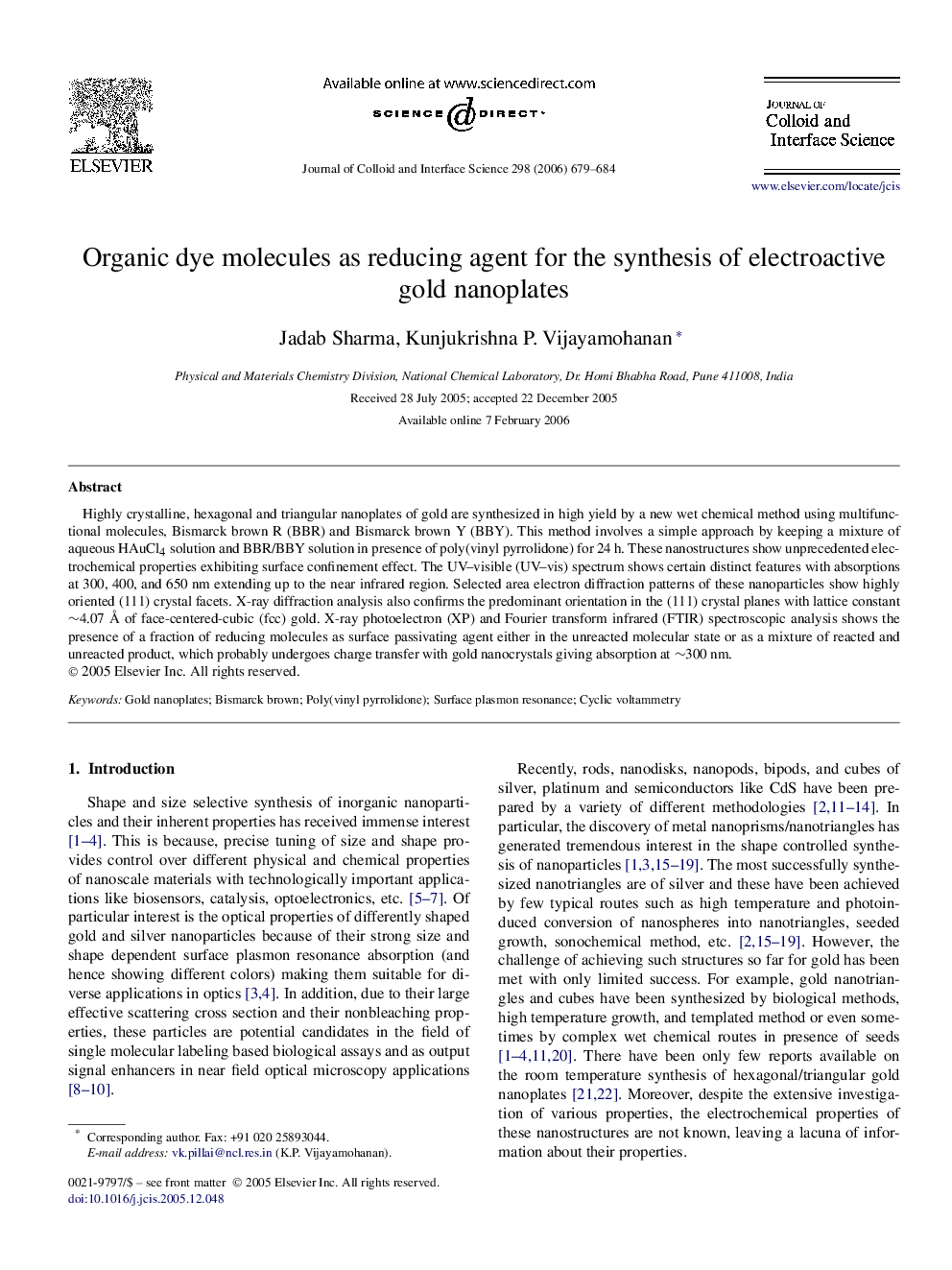| Article ID | Journal | Published Year | Pages | File Type |
|---|---|---|---|---|
| 613683 | Journal of Colloid and Interface Science | 2006 | 6 Pages |
Highly crystalline, hexagonal and triangular nanoplates of gold are synthesized in high yield by a new wet chemical method using multifunctional molecules, Bismarck brown R (BBR) and Bismarck brown Y (BBY). This method involves a simple approach by keeping a mixture of aqueous HAuCl4 solution and BBR/BBY solution in presence of poly(vinyl pyrrolidone) for 24 h. These nanostructures show unprecedented electrochemical properties exhibiting surface confinement effect. The UV–visible (UV–vis) spectrum shows certain distinct features with absorptions at 300, 400, and 650 nm extending up to the near infrared region. Selected area electron diffraction patterns of these nanoparticles show highly oriented (111) crystal facets. X-ray diffraction analysis also confirms the predominant orientation in the (111) crystal planes with lattice constant ∼4.07 Å of face-centered-cubic (fcc) gold. X-ray photoelectron (XP) and Fourier transform infrared (FTIR) spectroscopic analysis shows the presence of a fraction of reducing molecules as surface passivating agent either in the unreacted molecular state or as a mixture of reacted and unreacted product, which probably undergoes charge transfer with gold nanocrystals giving absorption at ∼300 nm.
Graphical abstractFigure optionsDownload full-size imageDownload as PowerPoint slide
